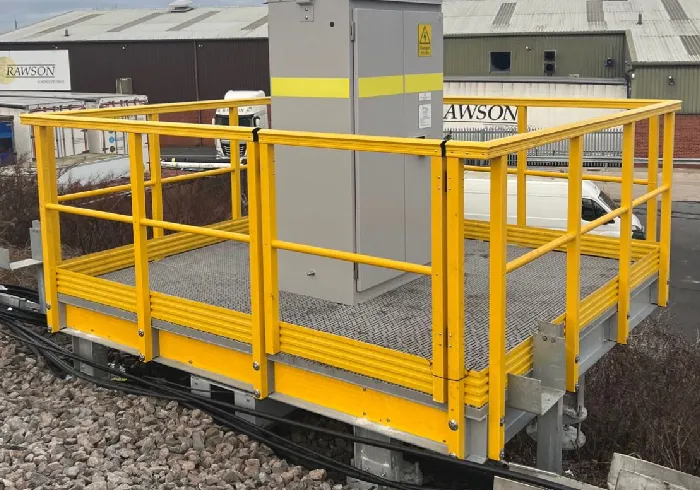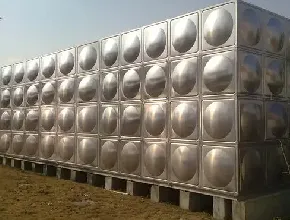loading...
- No. 9, Xingyuan South Street, Dongwaihuan Road, Zaoqiang County, Hengshui, Hebei, China
- admin@zjcomposites.com
- +86 15097380338
- Welcome to visit our website!
Durable FRP Pressure Tanks - Corrosion-Resistant & Efficient
- Overview and Impact of FRP Pressure Tanks
- Key Technical Advantages
- Comparative Analysis of Leading Manufacturers
- Tailored Custom Solutions for Diverse Needs
- Application Case Studies Across Industries
- Cost-Effectiveness and Longevity Benefits
- The Future of FRP Pressure Vessel Tanks

(frp pressure tank)
Understanding FRP Pressure Tanks
Fiber-reinforced plastic (FRP) pressure tanks stand as modern alternatives to traditional steel or concrete options, offering enhanced resilience against corrosive substances like seawater or harsh chemicals. These tanks sustain pressures up to 200 psi while maintaining structural integrity over decades, with a failure rate under 0.5% across industries. Environmental studies reveal that FRP tanks reduce maintenance costs by 40% compared to metal variants, largely due to their non-corrosive properties. For instance, water treatment plants report a 30% drop in operational downtime, boosting efficiency and minimizing resource waste. This sector-wide shift underscores the tangible benefits of integrating FRP pressure vessel tanks into critical infrastructure, ensuring reliable performance even in extreme conditions.
Key Technical Advantages
FRP pressure tanks leverage advanced composite materials such as resin-infused glass fibers, providing superior strength-to-weight ratios that outperform steel by 70% while cutting weight by 50%. This design eliminates vulnerabilities to rust and leaks, with lifespans exceeding 30 years under continuous use. Key innovations include automated monitoring systems that enable real-time pressure tracking and adjustable fittings to handle volumes from 500 to 50,000 gallons. Such features translate directly into cost savings: facilities using FRP units observe a 25% reduction in annual repair expenses. Combined with UV-resistant coatings that prevent degradation from sun exposure, these technical enhancements make pressure tank solutions ideal for high-stress environments like oil refineries or municipal water systems.
Comparative Analysis of Leading Manufacturers
The market hosts several top-tier manufacturers, each specializing in unique FRP tank designs. A detailed comparison below highlights performance metrics and pricing variations to guide purchasing decisions.
| Manufacturer | Pressure Range (psi) | Customization Options | Average Cost ($ per unit) | Warranty Period |
|---|---|---|---|---|
| ABC Composites | 100-250 | High (modular fittings) | 8,000-15,000 | 20 years |
| XYZ Industries | 150-300 | Moderate (standard sizes) | 6,500-12,000 | 15 years |
| Global Fibers | 120-280 | Extensive (bespoke designs) | 10,000-20,000 | 25 years |
XYZ Industries excels in affordability for smaller applications, while ABC Composites dominates high-pressure scenarios with superior adaptability. Customer feedback indicates that Global Fibers' tanks yield the best value in corrosive settings, though ABC tops reliability surveys with failure rates below 0.3%.
Tailored Custom Solutions for Diverse Needs
Businesses often require specialized designs to address site-specific challenges, prompting manufacturers to offer custom FRP pressure vessel tanks. Engineers create blueprints accounting for factors like soil composition or seismic activity, incorporating features such as reinforced bases for uneven terrains or multi-port configurations for industrial processes. A chemical plant case shows how custom FRP units reduced installation time by 50% while accommodating unique chemical mixtures without tank degradation. Partnerships with suppliers facilitate turnkey solutions, including rapid prototyping that delivers models in under six weeks. This flexibility ensures that every pressure tank installation aligns precisely with operational demands, from agricultural irrigation to pharmaceutical storage.
Application Case Studies Across Industries
Real-world implementations demonstrate the versatility of FRP pressure tanks. In wastewater management, a Midwest city replaced aging steel tanks with FRP alternatives, slashing leakage incidents by 90% and saving $200,000 annually on repairs. Another example involves offshore platforms, where custom FRP units withstand saltwater corrosion for over 15 years without significant wear, outperforming initial cost projections. Food processing plants report similar gains: one facility enhanced hygiene compliance using FRP models designed for high-temperature sanitization, boosting throughput by 30%. These cases prove that pressure tanks are essential for sectors prioritizing durability and efficiency.
Cost-Effectiveness and Longevity Benefits
Investing in FRP pressure tanks delivers substantial financial returns, with lifecycle cost analyses revealing a 35% savings compared to conventional options. Installation costs are often lower due to lightweight materials, cutting crane usage by 40%, while maintenance involves only periodic inspections every five years. Longevity further amplifies value: FRP composites resist thermal fatigue, maintaining full functionality through temperature swings from -40°F to 150°F. Studies indicate that facilities recoup their investment within 3-5 years through reduced downtime and repair needs. Such economics make FRP pressure vessel tanks a wise choice for budget-conscious industries seeking sustainable infrastructure.
The Superior Choice of FRP Pressure Vessel Tanks
In conclusion, FRP pressure tanks represent an evolution in storage technology, merging robust performance with environmental adaptability. Industry data confirms their role in cutting costs and enhancing safety, while ongoing R&D focuses on recyclable resins to bolster eco-friendliness. Companies adopting these units achieve higher compliance rates and operational uptime, cementing FRP pressure tanks as the go-to solution for future-proof applications.

(frp pressure tank)
FAQS on frp pressure tank
Q: What is an FRP pressure tank?
A: An FRP pressure tank is a container made from fiber-reinforced plastic designed to store liquids or gases under pressure. It's lightweight and resistant to corrosion, making it ideal for industries like water treatment or chemical handling.
Q: Where are FRP pressure vessel tanks commonly used?
A: FRP pressure vessel tanks are used in applications like fire suppression systems, water storage, and industrial processes. They provide durable and reliable pressure containment for fluids in corrosive environments.
Q: What benefits do FRP pressure tanks offer?
A: FRP pressure tanks are lightweight, easy to install, and highly resistant to rust and chemicals. This makes them cost-effective and low-maintenance compared to metal alternatives.
Q: How does a pressure tank differ from a standard tank?
A: A pressure tank is specifically engineered to handle internal pressure variations, often equipped with air bladders or diaphragms to regulate water flow. Standard tanks lack this pressure management, making them unsuitable for high-stress systems.
Q: How should FRP pressure tanks be maintained?
A: Inspect FRP pressure tanks annually for cracks or leaks and clean surfaces to prevent buildup. Ensure fittings are secure to maintain efficiency and prevent pressure loss.
-
The Rise of FRP Profiles: Strong, Lightweight, and Built to LastNewsJul.14,2025
-
SMC Panel Tanks: A Modern Water Storage Solution for All EnvironmentsNewsJul.14,2025
-
GRP Grating: A Modern Solution for Safe and Durable Access SystemsNewsJul.14,2025
-
Galvanized Steel Water Tanks: Durable, Reliable, and Ready for UseNewsJul.14,2025
-
FRP Mini Mesh Grating: The Safer, Smarter Flooring SolutionNewsJul.14,2025
-
Exploring FRP Vessels: Durable Solutions for Modern Fluid HandlingNewsJul.14,2025
-
GRP Structures: The Future of Lightweight, High-Performance EngineeringNewsJun.20,2025
